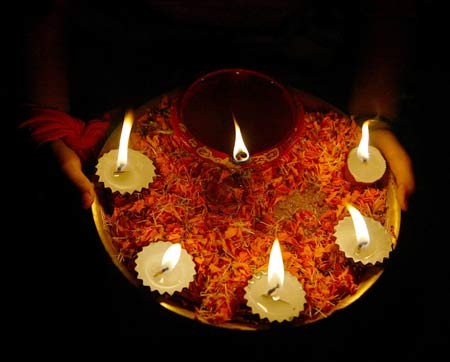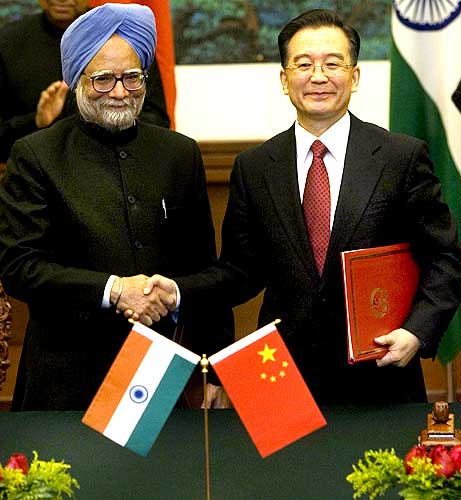 | « Back to article | Print this article |
Who'll rule? China, India or the West?
One of the greatest non-fiction books, no make that the greatest book, written in recent times is out: Why the West Rules -- for Now: The Patterns of History, and What They Reveal About the Future by Ian Morris of Stanford University.
If Jared Diamond's classic, Guns, Germs and Steel, was daring in ambition, breathtaking in the breadth of erudition, magisterial in execution, and provocatively parsimonious in explanation, Morris, save on the latter dimension, out-Diamonds Diamond.
Morris, like Diamond, seeks to answer a variant of arguably the most important question in the social sciences: why are some countries, regions, and peoples poor while others are rich?
And the reader will be richly rewarded for not seeking the short cuts that I or others might have to offer.
Diamond started the tape of humanity at about 13,000 BC. Morris pushes us back to about a million years BCE (and one feels cheated that we don't get his take on the period leading up to the Big Bang and even previous Big Bangs).
Click NEXT to read on . . .
Who'll rule? China, India or the West?
Diamond was reticent about the future. Morris fearlessly wades into the future and possible multiple futures, including some requiring fantastical imagining (or perhaps imaginative fantasying) of the Issac Asimov variety.
Diamond did not shy away from using and presenting key numbers and data. Morris not only returns the favour but does so by creating a series on social development, going all the way back to 14,000 BCE with some inventive tapping of sources, heroic assumption-making, and creative data-mining.
Diamond drew upon most of the sciences and social sciences to answer the big and basic question. Morris is deficient on ornithology compared to Diamond but makes up by taking the reader on excursions into the worlds of archeology, science fiction and literature.
In this era of specialisation and compartmentalisation of knowledge, Morris' book is a throw-back to the era of, and resounding victory for, encompassing erudition.
And whereas Diamond gave us one explanation for everything, Morris has to rely on three times as many. Father William of Ockham (of Occam's Razor fame) would be the only unhappy man if he were to read the Diamond and Morris tomes.
Click NEXT to read on . . .
Who'll rule? China, India or the West?
But what does this book have to do with any end-of-year musings on India? This book should both provoke the curiosity of Indians and give reason for pause.
Surprisingly, India hardly gets attention in the book. In the comparison between the West and the East that is its central focus, the only country/region to represent the East is China. Rather the East, for Morris, is China (and to some extent Japan).
The reason, I think, seems to be Morris' underlying view that throughout the last fifteen millennia, China has always had higher levels of development than India.
Did Chandra Gupta Maurya rule over a poorer kingdom than the later rulers of the Zhou dynasty? Was Mughal India not comparable to Ming China?
I am no historian and do not know the answers to these questions but it would be great if Indian scholars could engage in these questions, and take on Morris' conclusions where appropriate.
Click NEXT to read on . . .
Who'll rule? China, India or the West?
The one neglect of India and Indian history that did seem odd even to someone with only a superficial knowledge of Indian history related to Morris' discussion of the so-called Axial Age.
This term, used by the German philosopher Karl Jaspers, describes the centuries around 500 BCE, when a new and revolutionary view of man arose.
This view advocated that men turn within, focusing on themselves rather than on gods or on despotic rulers (which was distinctive of the preceding times) as the means to salvation.
Now, Morris' list of the key contributions of this Axial Age includes Confucian and Daoist texts from China, Greek Philosophy, the Hebrew Bible, and Buddhism and Jainism from India.
The only real export from India that is said to have wider impact, according to Morris, is Buddhism. The obvious omission here seems to be some of the older Upanishads -- the Brihadaranyaka and Chandogya -- which are thought to be clearly pre-Buddhist in origin and which represent no less radical a break with the past than those that feature on Morris' list.
Click NEXT to read on . . .
Who'll rule? China, India or the West?
Is Morris' inattention to these texts justified? And was India's economic development commensurate with such intellectual achievement at that point in time? Again, these are questions worthy of inputs from Indian scholars.
Why the West Rules will give pause for India in one important respect. There is a cottage industry of writings on the "will-it-be-China-or-India" question and I do not want to rehearse well-trodden arguments.
But if Morris' view that China was consistently ahead of India in the past is correct, it carries the implication that the economic future is better for China.
The reason relates to two historical correlations noted by him: regions that were relatively more developed in the past tend to industrialise and develop faster than those which were less developed; and countries that avoided European colonisation also tended to industrialise faster than the colonised.
Japan was developed in the past (before 1800 or so) and not colonised; China was highly developed in the past and only partly and intermittently colonised; and India was both less developed and colonised. Looking ahead, therefore, India's prospects may be bright but China's are brighter still.
Click NEXT to read on . . .
Who'll rule? China, India or the West?
Now, there is nothing deterministic about any of the patterns identified by Morris. But it would be imprudent to ignore them altogether.
India can no doubt rule in the future but that might require it to defy to some extent, rather than return to, the patterns of history.
At least, it should guard against the complacency on India's relative prospects that is reflected in three routine invocations: "India is a democracy," "India has the demographic dividend going for it while China is ageing," and "India has a better, more dynamic private sector."
Economic growth might not be a zero-sum game so that there is enough room in the world to accommodate the rise of China and India.
If so, discussions of the relative prospects of China and India are unnecessary and meaningless.
But for India to keep its eyes fixed on China is no bad thing if not as a rival and threat, then as a partner for expanding mutual economic possibilities, as an inspiration, and not least, as setting a floor on India's ambitions.
The author is senior fellow, Peterson Institute for International Economics and Center for Global Development.






